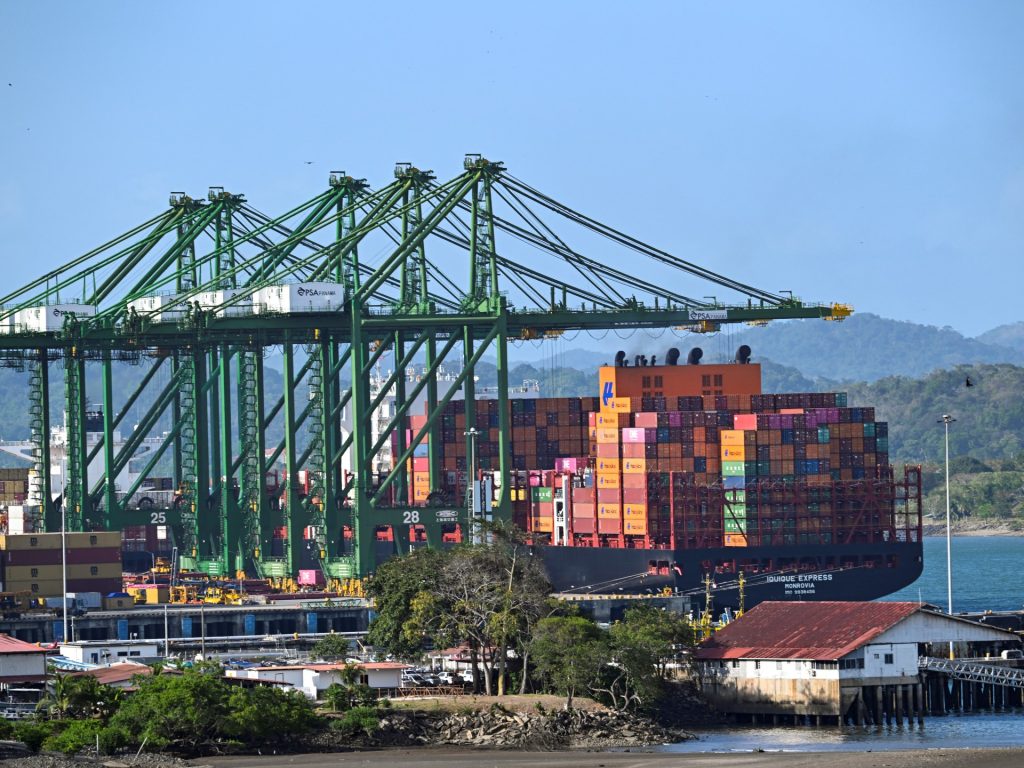A Shift in Global Alliances: Panama Withdraws from China’s BRI
In a move that has sent ripples through the global geopolitical landscape, Panama has become the first Latin American country to withdraw from China’s Belt and Road Initiative (BRI), a massive infrastructure program aimed at expanding Beijing’s economic and political influence worldwide. The decision comes amid growing pressure from the United States, which has long been critical of China’s expanding influence in the region. The withdrawal underscores the increasing tensions between Washington and Beijing, as well as the complex dynamics of global power struggles in the 21st century.
The Historical Context of Panama’s Involvement with the BRI
Panama’s association with the BRI dates back to 2017, when it became the first Latin American nation to officially join the initiative. The BRI, launched by Chinese President Xi Jinping in 2013, is a cornerstone of China’s foreign policy, aiming to create a network of trade and infrastructure connections across Asia, Europe, Africa, and the Americas. For Panama, joining the BRI was seen as an opportunity to attract Chinese investment, particularly in infrastructure projects, and to strengthen economic ties with one of the world’s leading economies.
However, Panama’s decision to leave the initiative marks a significant reversal in its foreign policy. The announcement was made by Panamanian President José Raul Mulino, who stated that the country had formally notified China of its withdrawal. This move follows a high-profile visit by U.S. Secretary of State Marco Rubio, who has been vocal about countering Chinese influence in the region. Rubio’s visit included a tour of the Panama Canal, a strategically vital waterway that has been a focal point of U.S.-China tensions in recent years.
The Role of U.S. Pressure in Panama’s Decision
The United States has been increasingly critical of China’s growing influence in Latin America, particularly in countries like Panama, which holds significant strategic importance due to the Panama Canal. President Donald Trump has repeatedly accused Panama of ceding control of the canal to China, a claim that both Panama and China have denied. Despite these denials, the U.S. has continued to exert pressure on Panama to reduce Chinese influence in the region.
Rubio’s recent visit to Panama appears to have been a turning point in the country’s decision to withdraw from the BRI. During his visit, Rubio threatened unspecified actions against Panama unless it took steps to reduce Chinese influence, particularly in relation to the Panama Canal. The withdrawal announcement was met with praise from Rubio, who described it as a “great step forward” for U.S.-Panama relations.
However, Panamanian President Mulino has denied that the U.S. pressured his country into leaving the BRI. Instead, he emphasized that the decision was based on Panama’s sovereign interests and a careful assessment of its bilateral relations with China. This assertion notwithstanding, the timing of the withdrawal, coming shortly after Rubio’s visit, has fueled speculation about the extent of U.S. involvement in the decision-making process.
China’s Reaction: Defending Its Global Initiative
China has reacted strongly to Panama’s withdrawal from the BRI, accusing the United States of interfering in the region and undermining the initiative. A spokesperson for the Chinese Ministry of Foreign Affairs, Lin Jian, condemned what he described as Washington’s “Cold War mentality” in Latin America. Jian emphasized that China firmly opposes any form of pressure or coercion aimed at sabotaging the BRI, which he described as a vital platform for global cooperation and development.
Lin Jian also criticized Rubio’s recent comments during his visit to the region, accusing the U.S. Secretary of State of making unfounded accusations against China and sowing discord between China and its Latin American partners. Jian reiterated China’s commitment to respecting the sovereignty of all nations and urged Panama to make decisions based on its long-term interests, free from external interference.
It is worth noting that the BRI has attracted more than 150 countries since its inception in 2013, including over 20 Latin American nations. China has positioned the initiative as a win-win proposition, offering much-needed infrastructure investment and economic opportunities to participating countries. However, critics, including the United States, have raised concerns about the initiative’s potential to expand Chinese influence and create debt traps for vulnerable economies.
Implications for Latin America and Global Diplomacy
Panama’s withdrawal from the BRI could have far-reaching implications for both Latin America and global diplomacy. The move may embolden other Latin American countries to rethink their participation in the initiative, particularly if they face similar pressure from the United States. At the same time, it could strain China’s relations with Panama and other regional partners, potentially limiting Beijing’s ability to expand its influence in the Americas.
The broader context of U.S.-China rivalry in Latin America cannot be ignored. The region has long been a battleground for influence between the two superpowers, with the United States seeking to maintain its traditional dominance and China aiming to expand its economic and political presence. Panama’s decision to leave the BRI could be seen as a victory for the United States in this ongoing struggle, but it also highlights the challenges faced by smaller nations caught in the crossfire of great-power competition.
Looking Ahead: The Future of Panama-China Relations
As Panama navigates its withdrawal from the BRI, the future of its relations with China remains uncertain. While Panama has sought to downplay the significance of its decision, it is likely to have repercussions for bilateral ties. China has made it clear that it will continue to support Panama’s sovereignty over the Panama Canal, but the withdrawal could lead to a reduction in Chinese investment and economic cooperation in the country.
For China, the loss of Panama as a BRI partner is a setback, but it is unlikely to derail the initiative entirely. With more than 20 Latin American countries still participating in the BRI, China retains a significant foothold in the region. However, the withdrawal serves as a reminder of the challenges China faces in maintaining its influence in the face of U.S. pressure and competition.
Moving forward, Panama will need to carefully balance its relations with both the United States and China, ensuring that its sovereignty and economic interests are protected. The decision to leave the BRI is a complex one, with potential benefits and drawbacks that will likely become clearer in the years to come. As the rivalry between the United States and China continues to shape global politics, smaller nations like Panama will face increasing pressure to take sides, making their foreign policy choices more critical than ever.
In conclusion, Panama’s withdrawal from the BRI marks a significant turning point in the region’s geopolitical dynamics, with implications that extend far beyond the country’s borders. As the world watches, the interplay between U.S. pressure, Chinese diplomacy, and Latin American sovereignty will continue to unfold, shaping the future of global alliances and economic partnerships.












